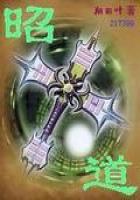Columbus made four voyages to the west between 1492 and 1504 in his vain search for a sea route①to Asia. The mystery of why he failed to find it haunted② him and filled with sadness.
Wherever he went─to Cuba, Puerto Rico, Jamaica, South America, Panama, down the coast of Central America─it was always the same story. Instead of golden palaces, there were grass huts③ and palm leaf tents. Instead of silk robed merchant princes, he found “Indians”who did not have so much as a shirt on their backs.
At times Columbus became reconciled to the truth that this new land was not China, not Japan, not the Spice Islands. He seemed to accept it as a part of the earth that the geographers of Europe had never heard of before. It was another world─and he called it exactly that─but Columbus also insisted until he died that the land he had reached was an unknown part of Asia.
① routen. 路;路线;路程;航线[C]
② hauntv. 常出没于
③ hutn. (简陋的)小屋
四次西航的哥伦布
哥伦布于1492到1504年间四次西航,希望找到一条通向亚洲的海上航线,但没有成功。失败常常萦绕心头,使他充满悲哀。
他沿着中美洲的海岸航行,无论他到什么地方——古巴、波多黎各、牙买加、南美洲和巴拿马,碰到的总是一样的情形。他看到的不是金色的宫殿,而是草棚和棕榈叶搭起的帐篷;映入眼帘的不是绸缎裹身的巨商豪富,而是连衬衣都穿不起的光脊梁印第安人。
有时,哥伦布不得不承认这一事实:这块新陆地不是中国,不是日本,也不是香料群岛。他似乎接受了下面这种说法,即这块陆地是欧洲地理学家们从未听说过的地球的一部分,是另外一个世界——他恰恰是这样称呼它的。但是哥伦布在离世以前一直坚持认为:他抵达的这块陆地是不为人知的亚洲一部分。















